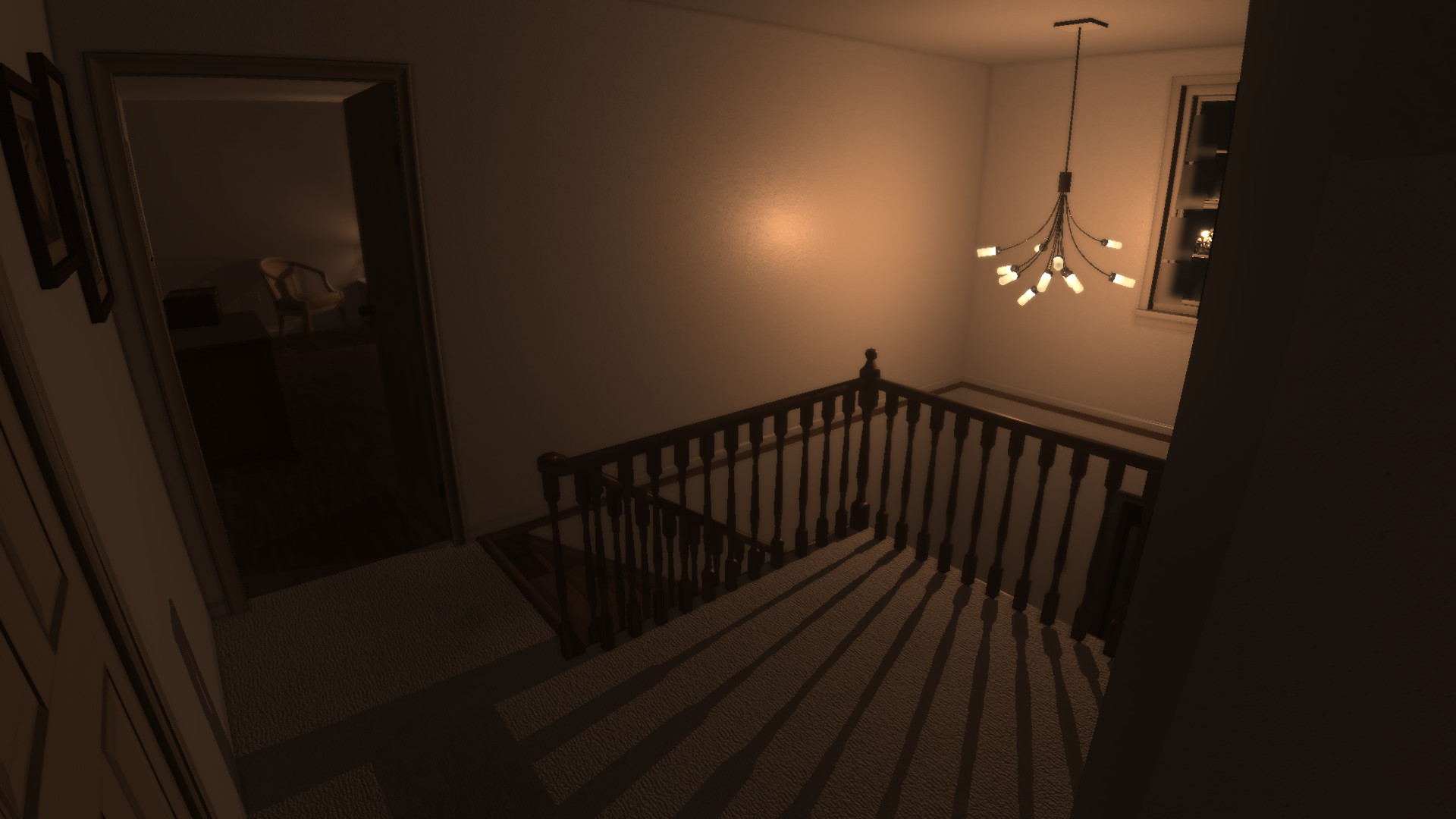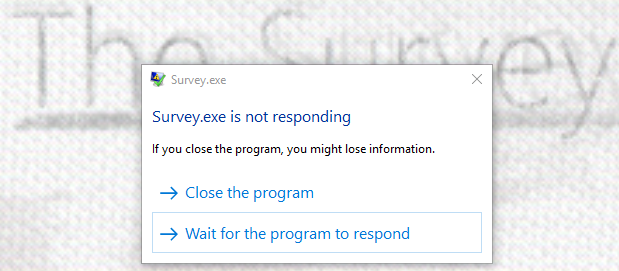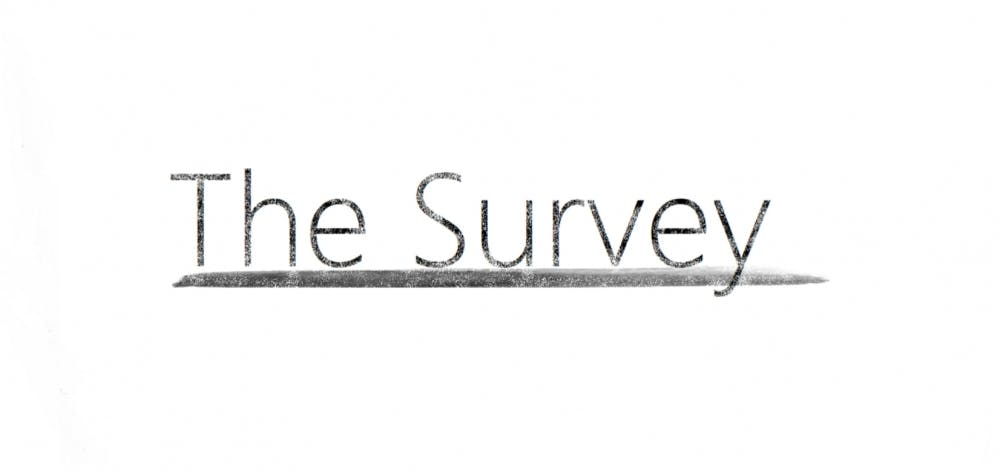by Emily Reuben Ever since the release of P.T. in 2014, numerous games have mimicked the successful formula which made P.T. a hit among horror fanatics. Despite the quantity of these knock-offs, very few are able to compare with the haunted atmosphere and masterful implementation P.T. managed to achieve. The Survey is no different in this regard. While The Survey manages to have a similarly chilling ambiance, exhausted horror tropes and unremarkable gameplay leave much to be desired.
Haven’t I heard this story before?
...what separates The Survey from less effective titles is the use of the cell phone, specifically the “survey” app.The Survey details the lives of two children subject to their parent’s negligence and abuse. Lilith is an exceptional painter forced to paint for her parent’s profit. Meanwhile Marcus, Lilith’s younger brother, is ignored and even beaten by their alcoholic father. Lilith and Marcus’ accounts are relayed through a series of journal entries the player is tasked with uncovering throughout the course of the game, similar to other entries in the genre such as Layers of Fear. The player takes on the role of Marcus alone in a narrow, dimly lit home armed with nothing but a flashlight and cellphone. Periodically, Marcus receives messages and tips from his phone, alluding to another person being in the house. This apparition can be seen at multiple points throughout the game as it appears to be looking for Marcus. W
 hile this narrative line is nothing new, what separates The Survey from less effective titles is the use of the cell phone, specifically the “survey” app. While collecting journal entries and exploring the home, the player is prompted to take a survey on their phone. The initial questions are general and appear to be unrelated to the story. After a few questions, the survey becomes peculiarly specific, asking the player questions specific to the locations in the house. Eventually, the survey takes an uncomfortable turn when it notifies the player, “She heard you. Hide,” before quickly closing.
This warning is the height of the game’s narrative tension. Unfortunately, around halfway through the tension disappears along with the survey app. For a game titled The Survey, the actual survey is short and ultimately unrewarding, giving a false illusion of choice as events are relayed in a linear fashion. This is truly a shame, as the idea of the survey and its initial implementation build up the atmosphere substantially, but turn out to be a waste of a genuinely good idea that had shown a fair degree of promise.
hile this narrative line is nothing new, what separates The Survey from less effective titles is the use of the cell phone, specifically the “survey” app. While collecting journal entries and exploring the home, the player is prompted to take a survey on their phone. The initial questions are general and appear to be unrelated to the story. After a few questions, the survey becomes peculiarly specific, asking the player questions specific to the locations in the house. Eventually, the survey takes an uncomfortable turn when it notifies the player, “She heard you. Hide,” before quickly closing.
This warning is the height of the game’s narrative tension. Unfortunately, around halfway through the tension disappears along with the survey app. For a game titled The Survey, the actual survey is short and ultimately unrewarding, giving a false illusion of choice as events are relayed in a linear fashion. This is truly a shame, as the idea of the survey and its initial implementation build up the atmosphere substantially, but turn out to be a waste of a genuinely good idea that had shown a fair degree of promise.
Scary surroundings and spooky sounds
One of The Survey’s strengths is the eerie atmosphere created within the house. Sound is a rarity throughout, and when it occurs is appropriately muffled. The weakest aspect of sound is the rare instances of voice acting which occur over a radio transmission and television. While it is clear the intent is to implement an almost surreal or unnatural quality through heavily digitized and distorted audio, the execution leaves something to be desired. Because the only verbal sounds occur in these instances, they tend to break the muted, subtle sound established as the norm, as this disembodied voice is the only voice in the game. As in most horror titles, darkness is pervasive in every room. The lighting
that exists lures the player into a false sense of security. The game succeeds at striking a healthy balance between the comfort of light and the safety of hiding in the shadows from that which follows.
As in most horror titles, darkness is pervasive in every room. The lighting
that exists lures the player into a false sense of security. The game succeeds at striking a healthy balance between the comfort of light and the safety of hiding in the shadows from that which follows.
Immortality is a curse, not a blessing
...knowing that there is no real way to lose certainly takes the “survival” out of survival horror with the “horror” leaving soon after.The biggest failure of The Survey is a trap almost all modern survival horror titles become subject to: there are no stakes. From the first encounter with the apparition, it is evident that death is an impossibility. Instead, the game focuses on relaying its story, thus the player is unable to die in order to continue finding journal entries. When this revelation occurs (and it occurs very quickly), there is little to be afraid of. While creepy imagery and suspiciously moving objects offer a sense of unease, knowing that there is no real way to lose certainly takes the “survival” out of survival horror with the “horror” leaving soon after. Because of this, the game needs to be viewed as an experience, or else boredom may quickly ensue.
Crashed again? The horror!
 It should be noted that while graphical glitches did not occur while playing the game, managing to make The Survey advance past the loading screen was a horrifying experience within itself. After crashing six times on the lowest graphical settings, the game seemed virtually unplayable. By sheer luck, the game finally progressed passed the loading screen. A quick review of Steam forums reveals that this is not an isolated problem and that some players have been unable to play the game at all. With this information,it may be wise to wait until the game has been patched until making a purchase.
It should be noted that while graphical glitches did not occur while playing the game, managing to make The Survey advance past the loading screen was a horrifying experience within itself. After crashing six times on the lowest graphical settings, the game seemed virtually unplayable. By sheer luck, the game finally progressed passed the loading screen. A quick review of Steam forums reveals that this is not an isolated problem and that some players have been unable to play the game at all. With this information,it may be wise to wait until the game has been patched until making a purchase.



















